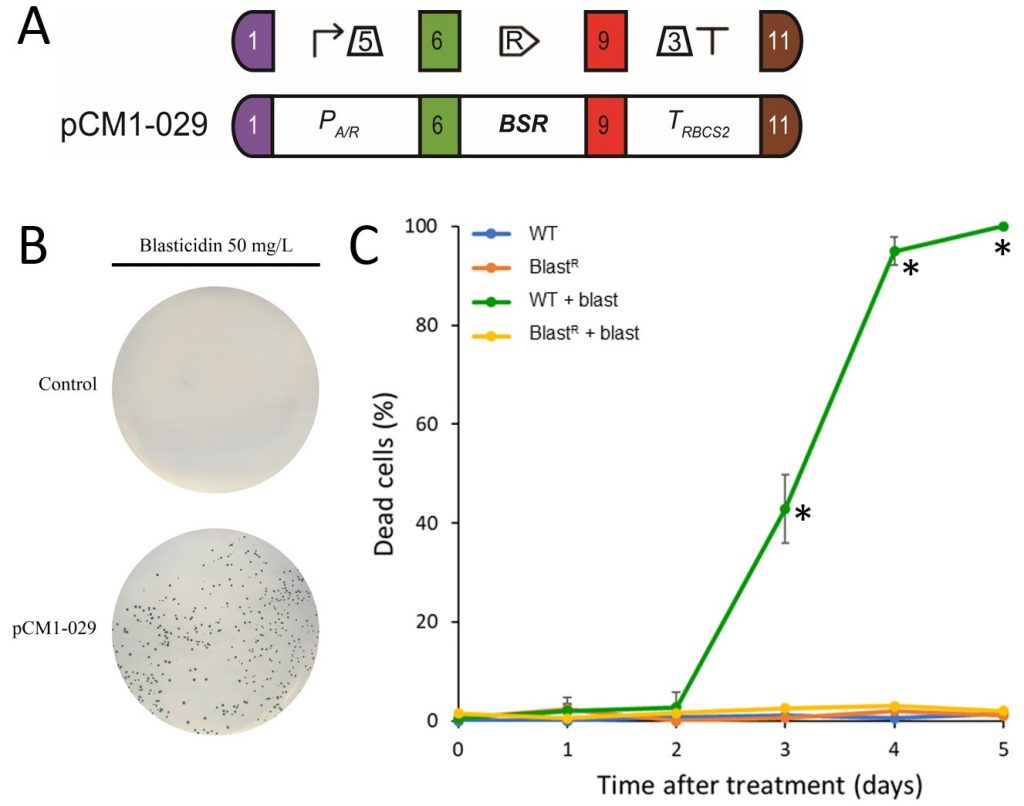Characterization of mechanisms controlling aggregation, a defense process in response to stress in the unicellular alga Chlamydomonas reinhardtii
The 30th of march 2021 at 14:00
The unicellular model alga Chlamydomonas reinhardtii is one of the most studied photosynthetic organisms. Its prevalence in basic and biotechnological research is due to the powerful genetic and molecular biology approaches that can be developed in this organism. We use Chlamydomonas to understand the strategies used by a unicellular organism to survive in a hostile environment.
This thesis describes a new collective abiotic stress response. In a toxic environment, cells aggregate forming multicellular structures visible to the naked eye in which they are protected. We analyzed this process using genetic, reverse genetics, imaging approaches and a multiomic analysis. Aggregates were found to be built by cell adhesion rather than a clonal mode. In addition, we detected a sugar-containing extracellular matrix embedding the cells. Interestingly, the extracellular medium of aggregated cells is sufficient to induce aggregation of planktonic ones.
To discover the regulators of aggregation, we screened a library of 13000 insertional mutants. 16 socializer (saz) mutants that aggregates spontaneously were isolated. These mutants exhibit a strong resistance to stress, thus confirming that aggregates are protective of the surrounding toxicity. They also contain an extracellular matrix, and their filtrate is sufficient to induce aggregation. Thanks to the analysis of the transcriptome and secretome of saz mutants we have identified families of proteins potentially involved in the establishment of multicellular structures. A reverse genetics approach on candidate genes allowed us to identify the first positive and negative regulators of aggregation in response to stress.

